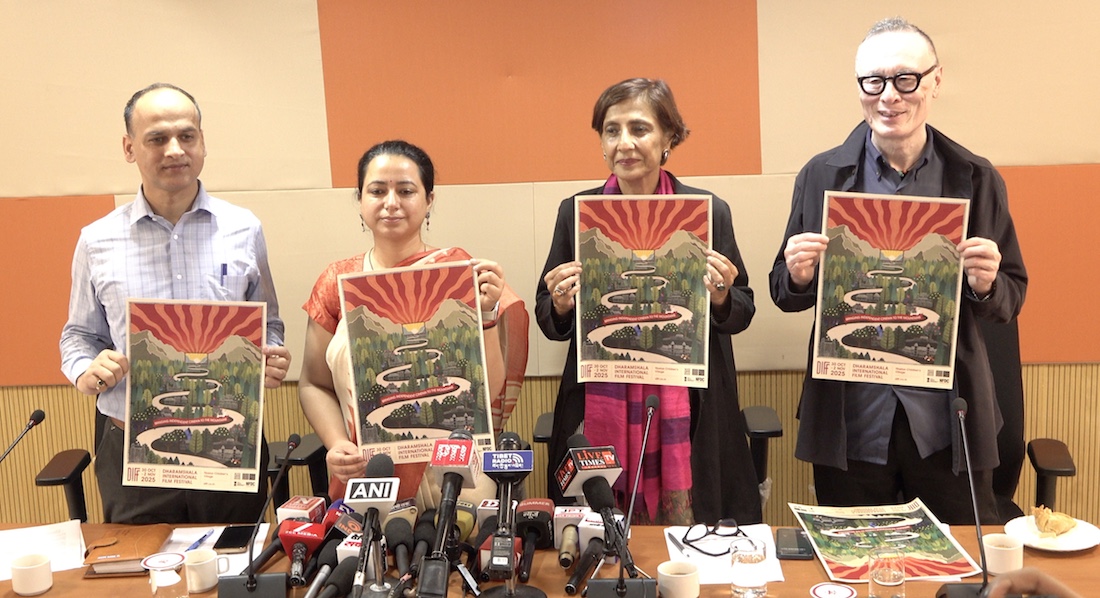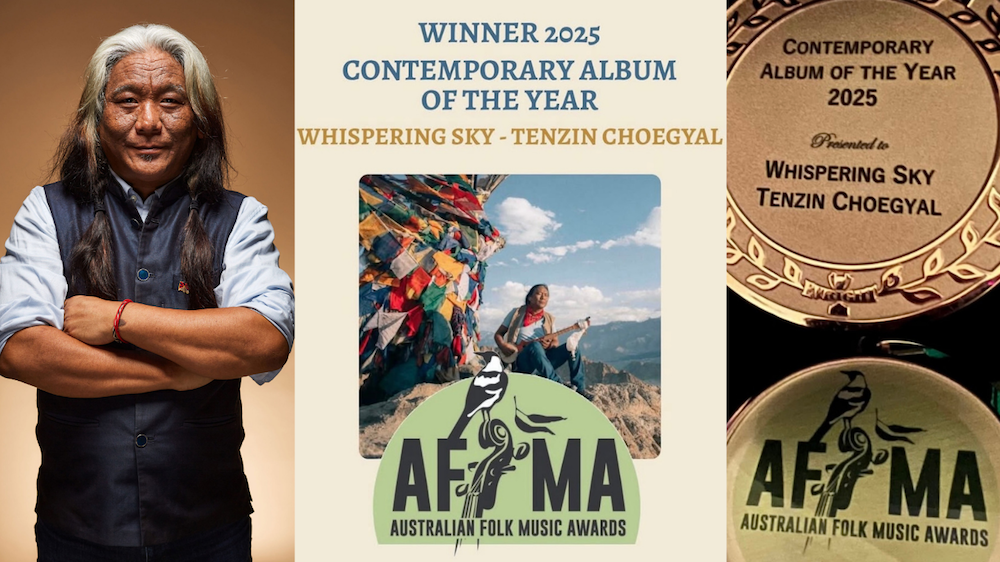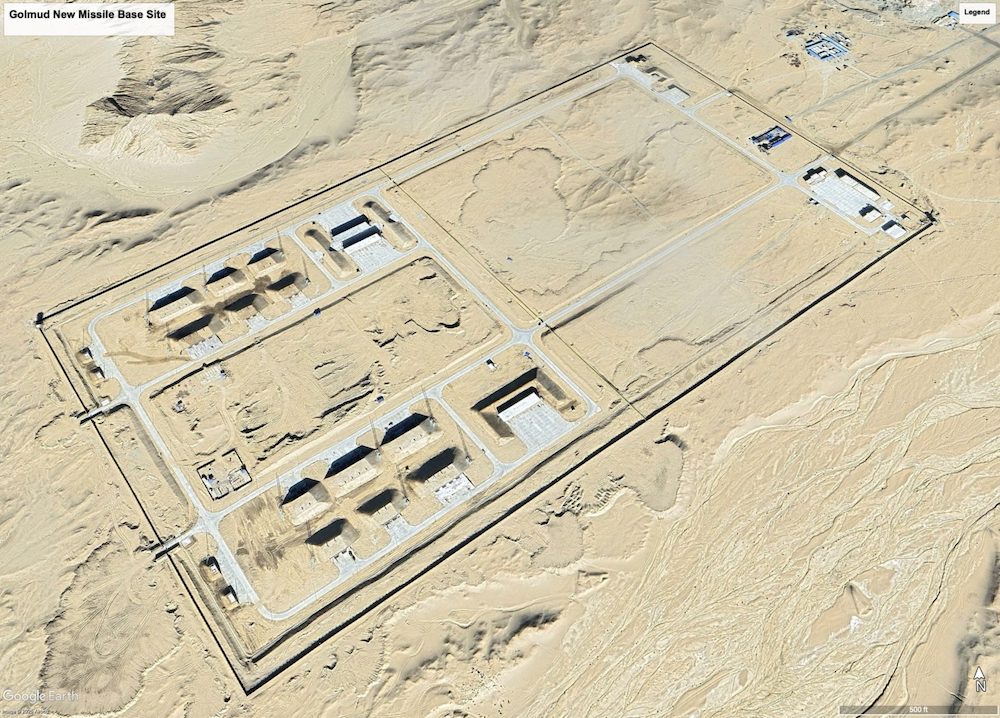by Tenzin Dickyi
Last Friday evening, the Sundaram Tagore Gallery in Beverly Hills, CA, opened its latest exhibition entitled “Save the Himalaya” to some 300 odd guests who attended the opening reception. The exhibition showcases recent works and original drawings from Ms. Rima Fujita, a Japanese artist from New York who has been a longtime friend of Tibet. The exhibition is centered around drawings from Ms. Fujita’s latest children’s book entitled “Save the Himalaya”, which is scheduled to be published by Sanctuary Books in October 2011.
The guest of honor at the opening was Representative of His Holiness the Dalai Lama to the Americas, Mr. Lobsang Nyandak. He spoke about the urgency of the environmental crisis in and around the Himalayan region, and praised Ms. Fujita’s efforts to bring attention to this issue. The other speakers were Dr. Stephen Commins, of the University of California, Los Angeles, and Mr. Tenzin Dorjee, Executive Director of Students for a Free Tibet, who stressed that it is not just the environment of Tibet that is being threatened and in great danger but also its culture.
The speakers commended Ms. Rima Fujita for establishing Books for Children, a non-profit organization dedicated to providing children in need with books. So far, Books for Children has donated over 10,000 books to Tibetan children in refugee settlements in India and Nepal. All proceeds from art sales at the current exhibition will also be used to send books to these settlements.
As the artist explains it, her first inspiration for these books came from a fortuitous meeting with Mr. Sonam Zoksang, a gifted professional photographer who was one of the first Tibetans to settle in New York in the ‘80s. Mr. Zoksang, who became good friends with Ms. Fujita, told her that as a child growing up in the Tibetan refugee settlements in India, he never had any children’s books to read. The few children’s books that were available in their tiny school library, donated by charities or western governments, were all in English, which they didn’t understand.
Ms. Fujita, determined that Tibetan kids should have books in Tibetan to read, wrote and illustrated her first book titled “Wonder Talk.” The book, about two brothers and a big radish, was based on a folk tale told to her by Lama Pema Wangdak, a Buddhist teacher in New York who founded Palden Sakya Center. Published in both English and Tibetan, “Wonder Talk” was selected as recommended reading for children by the United Nations. Ms. Fujita’s second book, “Wonder Garden”, was also based on a story told to her, a story from the life of His Holiness the Dalai Lama. Her third book, called TB Aware, was written to promote awareness of this endemic disease among Tibetan children and youth.
The daughter of a Japanese businessman, Rima Fujita grew up in a household that was more secular than spiritual. In fact, her first encounter with Tibetan Buddhism occurred in New York City, well after she had moved to the United States to complete a BFA from the Parsons School of Design. But immediately she felt drawn to it and has been a practicing Buddhist ever since.
The Buddhist influence, as well as the artist’s love for Tibet, is clear from the artwork displayed at Sundaram Tagore gallery. Working on black paper with bright oil pastels, for “Save the Himalaya”, Ms. Fujita has created beautifully drawn characters amid a Tibetan plateau that looks like a gorgeous landscape of dreams. The family in the story, especially the children, look like a mix of Tibetan and Japanese rendered in anime, but where anime is a sketch, this is a generous and skillful rendering that fully fleshes out the characters.
Of conceiving the story that inspired these drawings, Ms. Fujita said, “I noticed that for the last five or six years, His Holiness has really been focusing on the environmental issue, so I started learning about it. We don’t really get to hear about it because the Himalayas are far from us, but we are all affected by the Himalayas.”
“In a way,” the artist continued, “the people who live around the Himalayas are the victims of everyone else because they are not causing the problem, the world is causing the problem. So this book is for the world.”
The exhibition “Save the Himalaya” will close on May 22nd.
Tenzin Dickyi lives in New York City and writes at www.YuthokLane.blogspot.com.









